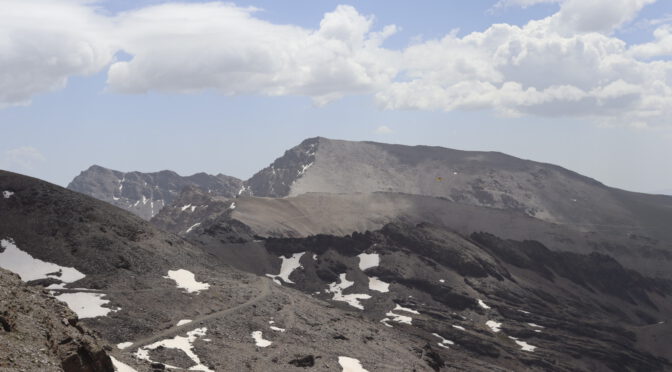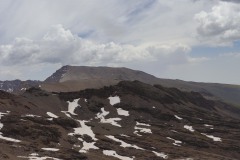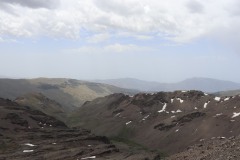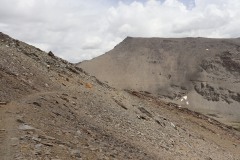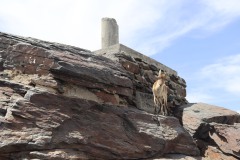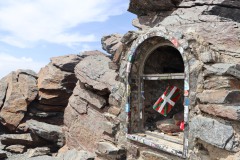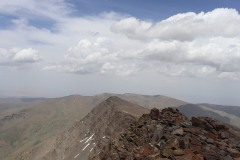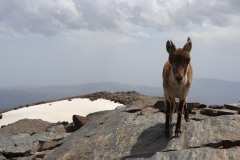It was my second visit to the Sierra Nevada mountain range in Southern Spain (Andalusia), and opposed to December I had not to deal with snow and ice this time but with summer heat, obviously.
Located in this mountain range is (Pico de) Mulhacén, the highest peak in continental Spain boasting 3479 meters AMSL.
The only Spanish mountain surpassing Mulhacén is Pico del Teide (3715 meters AMSL) on the Canaries, islands that belong to Africa geologically, and, interestingly enough, the third highest Spanish mountain Aneto (3404 meters AMSL) is lying in yet another mountain range, the Pyrenees.
Mulhacén, June 17
Given the height of the peaks and the altitude of the mountain range in general, the Sierra Nevada is easily accessible.
You can park your car on 2400 or 2500 meters in the town of Pradollano1, and start your ascent there following a paved road or walking the well-marked gravel paths until you reach your first stopover, the “Refugio Vivac de la Carihuela” on 3200 meters, an unmanned shelter offering the opportunity to spend the night.
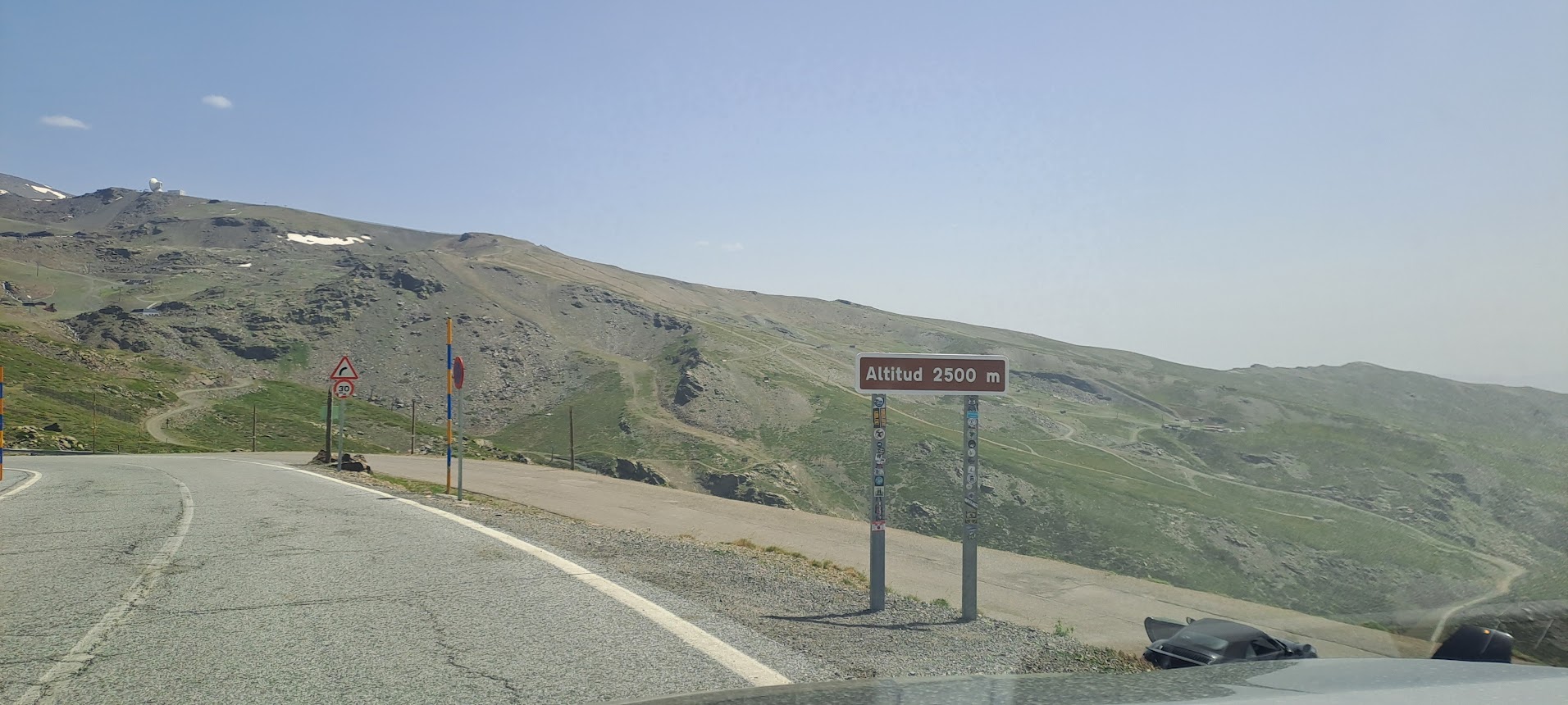
The shelter lies at the foot of Pico del Veleta (3396 meters AMSL), the second highest peak in the Sierra Nevada, but I paid no attention to that mountain this time and I steered directly for the paths to Mulhacén.
Speaking of shelters, I came across two more of them in the next three hours, what was the time I needed to reach the summit: the shelter “Refugio Vivac de la Caldera” at 3065 meters lying directly at the foot of Mulhacén, “Refugio Villavientos” you’ll only notice by making a detour turning south and not going the direct way along the “Laguna de la Caldera”.
These bulky refuges all look much the same and offer space to sleep (comfortably) for about a dozen people on end-to-end wooden plank beds, but for they are all unmanned you get no food items, blankets and the like there, the name Refugio Vivac (“Bivouac Shelter”) suggests that already.

The ascent is not difficult at all from the western slope, the tour itself just being very long and with summer heat exhausting, though along the way there are many water sources to be found.
It was a tour in solitude on this Tuesday also, but again I was lucky to make a new friend while resting on the peak, a young Spaniard who was sharing my enthusiasm for the outdoors and for photography.
Numerous were the animals I encountered, but I do not think they are called chamois here. They are timid, but if you just sit there and aren’t moving much they might get curious and come closer, especially when you’re unpacking food.
In sum, an absolutely magnificent mountain tour in a magical place sure to be repeated, be it on the way described here or be it by using one of the southern entrance points to the Sierra Nevada.
Photo gallery
Footnotes
1 supposedly, there is also a bus operating that goes even further up, but I’ve never seen one; Pradollano itself is mostly in hibernation during summer, for the Sierra Nevada is essentially a skiing region
